5. Impacts
Climate change impacts not only physical but also biological and human systems. Possible impacts of future climate change are important considerations for current decision making, but they are associated with uncertainties. In this chapter we will discuss future projections with climate models, the main sources of uncertainty for those projections, and some global scale impacts — focusing mainly on the ocean.
Projections
Prediction is difficult, especially about the future[1]. This is also true for projections of future climate change. They rely on assumptions about future radiative forcings such as anthropogenic emissions of greenhouse gases and aerosols, which are unknown. For this reason they are called projections and not predictions.
Climate scientists believe that the best projections consider results from state-of-the-science climate models because they are syntheses of theoretical and empirical knowledge. However, as we have learned in the previous chapters, climate models are imperfect. Uncertainties in future projections will therefore arise from both, assumptions about future greenhouse gas emissions and climate model errors.
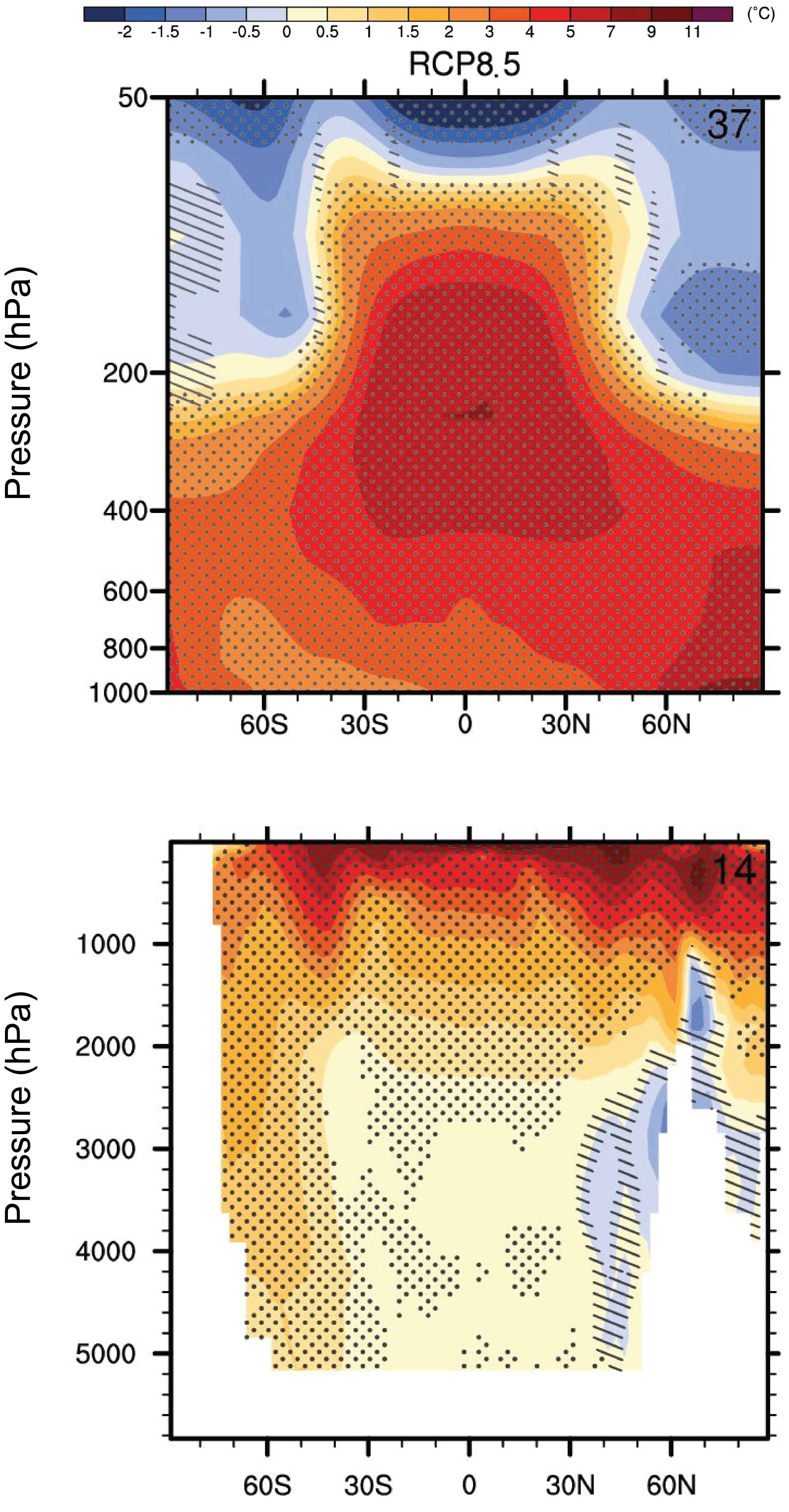
The observed warming of the upper ocean is projected to continue and penetrate deeper into the ocean interior particularly in regions of deep water formation such as the Southern Ocean (Figure 1.5.1). More warming of the surface will increase the stratification of the ocean and reduce vertical mixing, with implications for the ocean’s meridional overturning circulation and nutrient delivery to the euphotic zone, both of which will likely continue to decrease.
Warming of the surface is projected to increase evaporation everywhere except in the northern North Atlantic and Southern Ocean where the warming is smallest and over some land areas where precipitation is projected to decrease (Figure 1.5.2). Precipitation is generally projected to increase in regions that are already wet like the tropics and at mid- to high-latitudes, and decrease in regions that are already dry like the subtropics. Relative humidity is generally projected to decrease over land areas and increase over the oceans. The net surface freshwater loss, which is determined by evaporation minus precipitation (E − P), is projected to increase in the subtropics, whereas the tropics and mid- to high latitudes will gain water. Runoff is projected to increase in most regions except around the Mediterranean, the Southwest US and Mexico, southwest Africa, and parts of South America. Soil moisture, on the other hand, is projected to decrease almost everywhere except in parts of North Africa, Asia, and South America, where precipitation increases substantially.
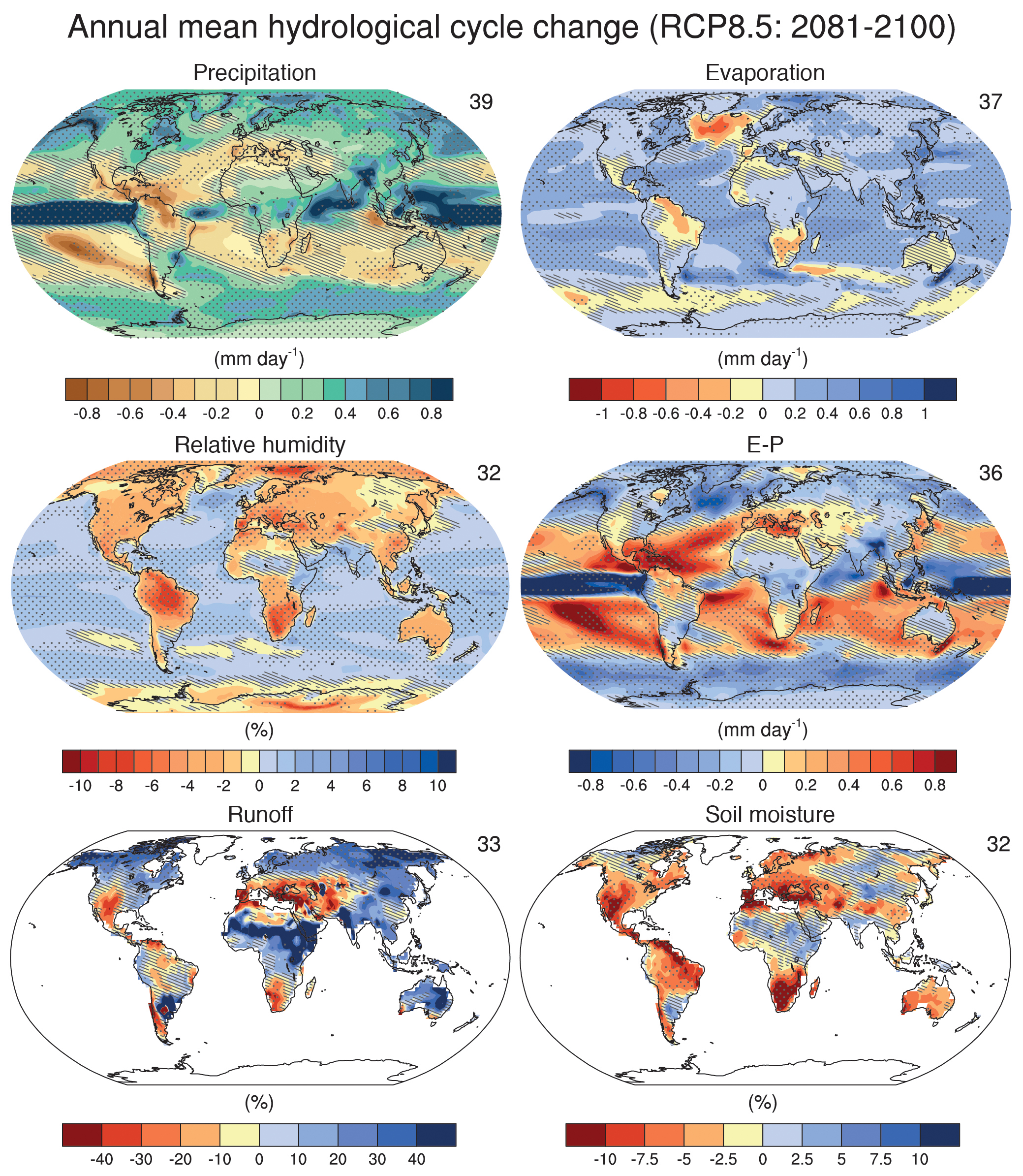
Projections suggest that Arctic sea ice will continue to decline in the future particularly at the end of summer (Figure 1.5.3). However, much larger declines are projected for the high emission scenario (RCP8.5), for which all models project an almost completely ice free Arctic ocean, compared to the low emission scenario (RCP2.6), for which all models project a substantial remaining sea ice cover.
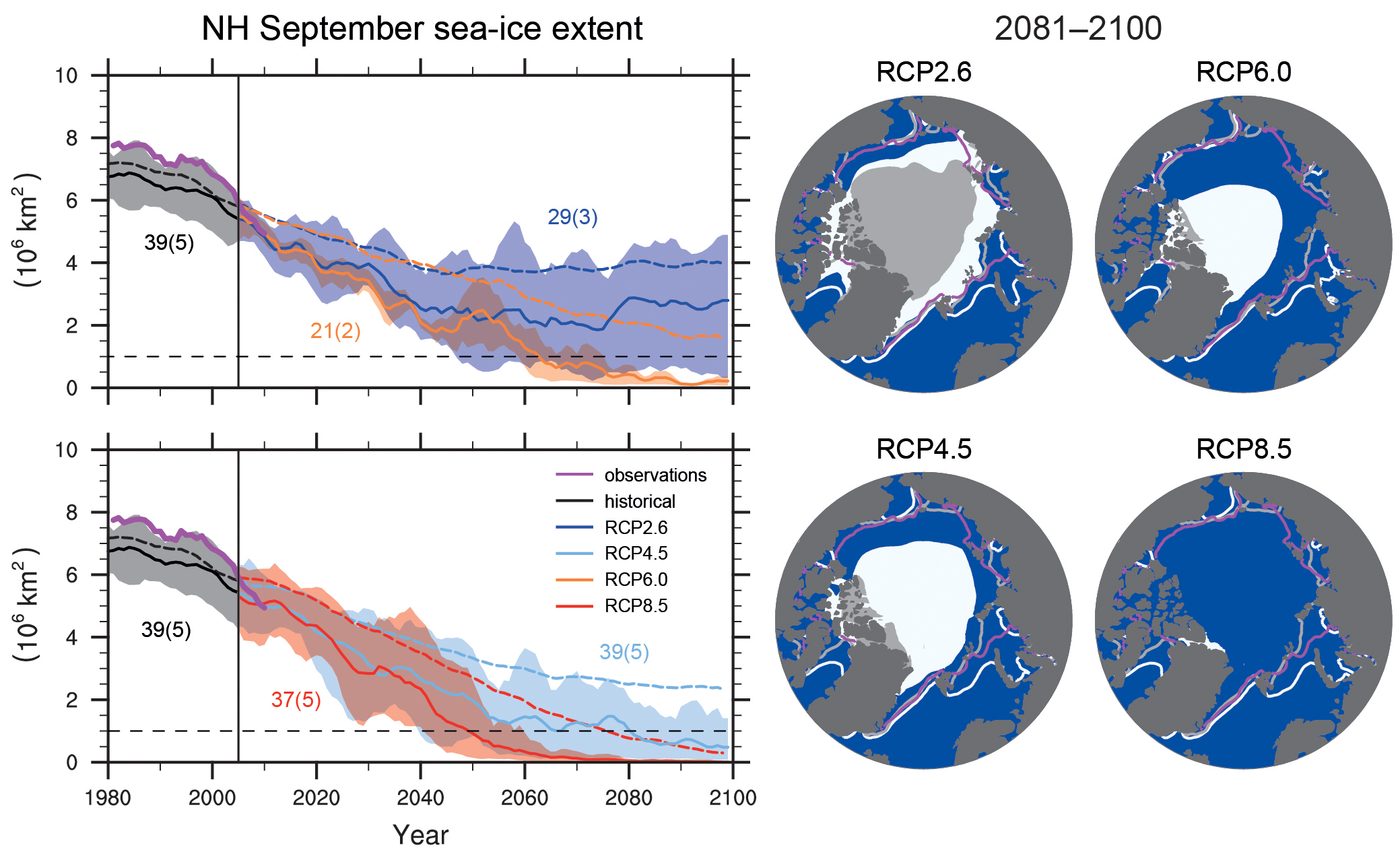
Mountain glaciers are also projected to continue to melt, as well as the Greenland and Antarctic ice sheets. Due to this input of mass together with the expansion of the ocean from warming sea levels are projected to increase by 40 to 70 cm by the year 2100 (Figure 1.5.4). Note that sea level projections are very similar for all scenarios until mid-century. This indicates the commitment to the near future sea level rise from past carbon emissions. In other words, considerable climate change and the associated impacts are already baked into the system and cannot be avoided. It implies the necessity to adapt to these unavoidable impacts.
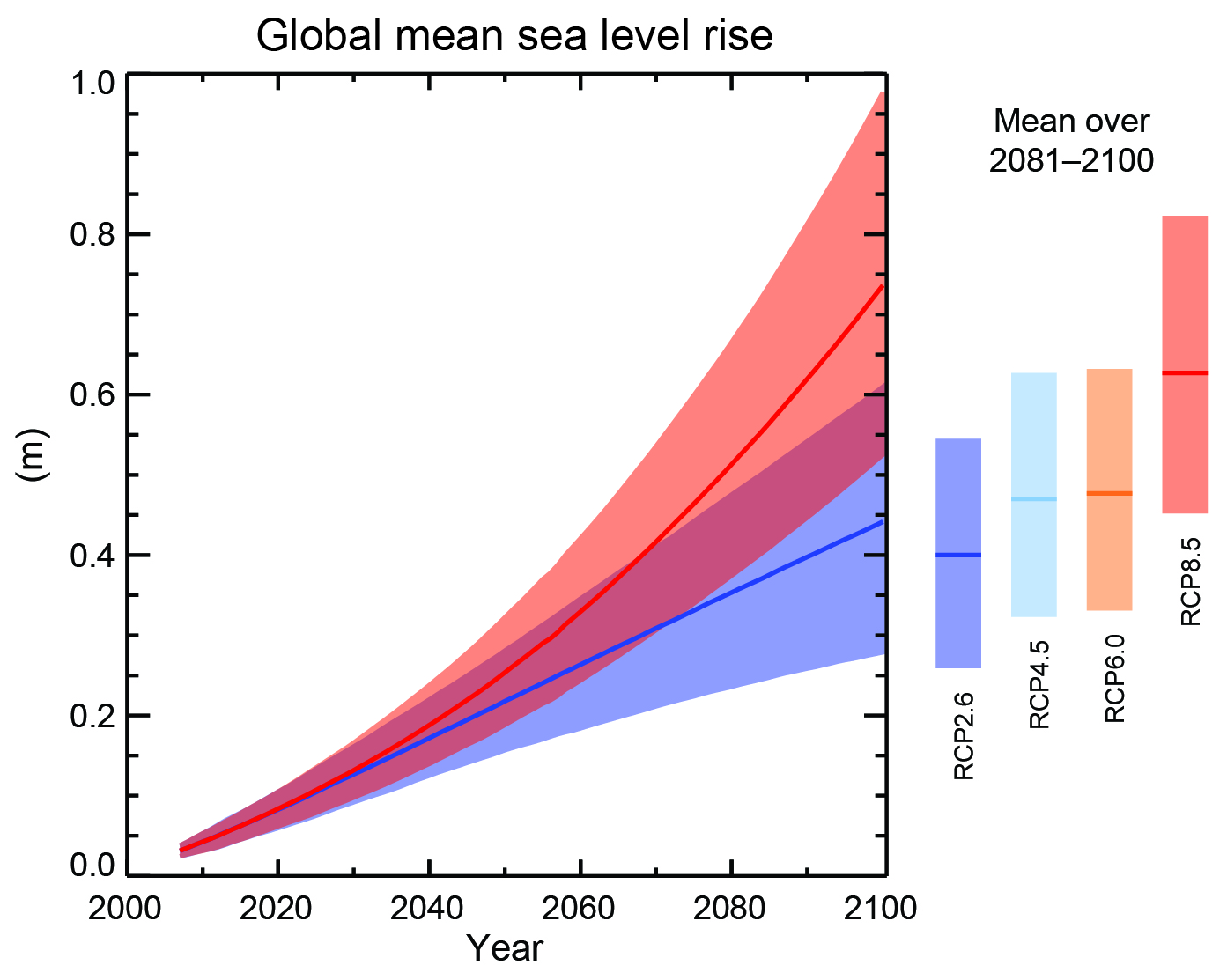
Ecosystems
One of the most sensitive ocean ecosystems are probably coral reefs. Corals are threatened not only by bleaching, which refers to the expulsion of their symbiotic algae resulting from warmer waters, but also by ocean acidification, which inhibits their calcium carbonate production. The presently observed shift of fish species towards higher latitudes will most likely continue.
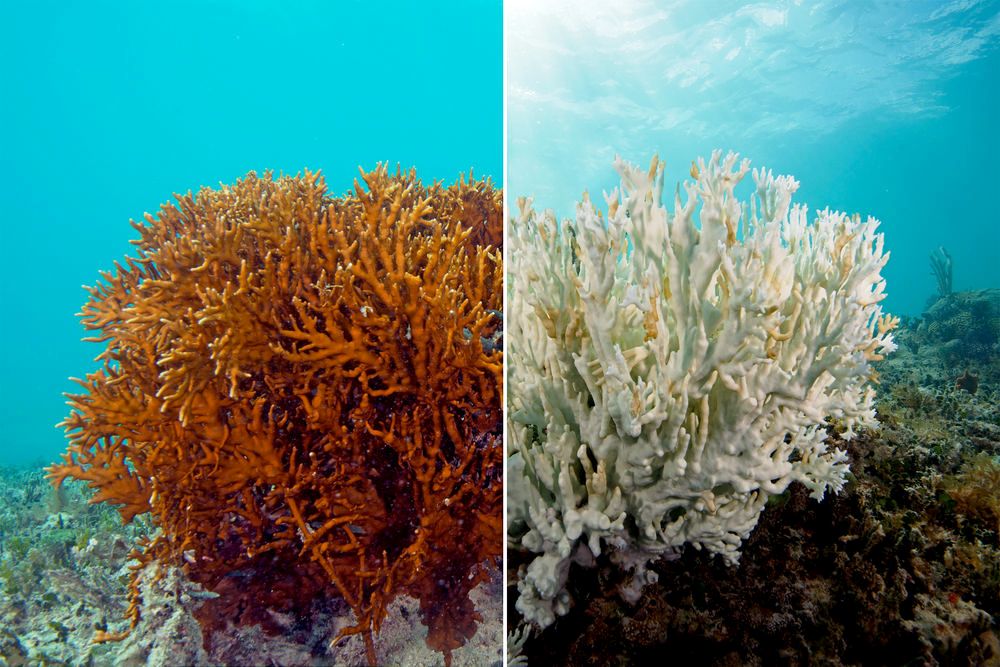
In the Arctic narwhales may be replaced by invading killer whales (Figure 1.5.6). Similarly, for many other species from phytoplankton to whales, some will benefit and others will suffer from climate change. Calcifiers such as coccolithophores will presumably be among the losers due to ocean acidification, whereas cyanobacteria, which is another group of phytoplankton, may be among the winners (Dutkiewitcz et al., 2015). Because of this complex response, many consequences for ecosystems cannot be predicted. It is therefore likely that there will be surprises that scientists could not foresee.
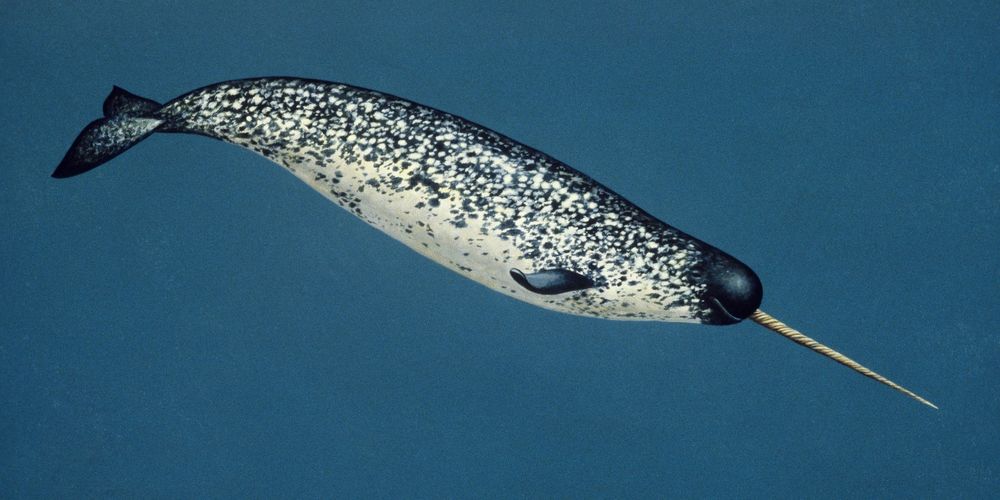 |
 |
| Figure 1.5.6: Narwhal (left) and killer whales (right). | |
Generally, impacts of climate change on Earth’s ecosystems will be larger for high emission scenarios and smaller for low emission scenarios. Earth’s ecosystems are resilient. They have experienced large climate changes in the past, such as during the ice age cycles of the Pleistocene. However, current rates of change and those expected for the future are larger for some climate variables than past rates (Figure 1.5.7), which has many scientists concerned about the adaptability of ecosystems.
Long-Term Changes
Due to the long lifetime of carbon in the Earth system current human activities will affect many future generations. The ultimate fate of anthropogenic carbon is burial in ocean sediments. This is a slow process that takes tens of thousands of years to remove all of the extra carbon. For this reason much of the carbon we’re putting into the atmosphere today will impact climate and Earth’s physical, biological and human systems for a long time. The total amount of available fossil fuels still in the ground is uncertain (~10,000 PgC, GEA, 2012), but it is clear that enough exists to melt all major ice sheets, which would raise sea level by about 65 m. Figure 1.5.7 shows scenarios of up to about 5,000 GtC, which leads to complete melting of the Greenland and West Antarctic ice sheets and most of the East Antarctic ice sheet with a sea level rise of about 50 m. Even the relatively low (1,280 GtC) emission scenario would lead to a long term sea level rise of about 25 m. However, the rate of change would be much slower for the lower emission scenario (0.5 m/century) compared with the higher scenario (3 m/century). Such rates are unprecedented in more than 8,000 years. High emission scenarios would melt essentially all mountain glaciers on Earth, whereas low emission scenarios would melt about 70% of current glaciers, mostly within this and the next century (Marzeion et al., 2012). Global warming for all but the low emission scenarios will be similar to or even exceed that from the Last Glacial Maximum to the early Holocene (~4ºC). Transformations of Earth’s ecosystems similar in magnitude to those documented for the last deglaciation can therefore be expected for intermediate and high emission scenarios. Because of the prominence of the human influence the period since the industrial revolution has been called the Anthropocene.
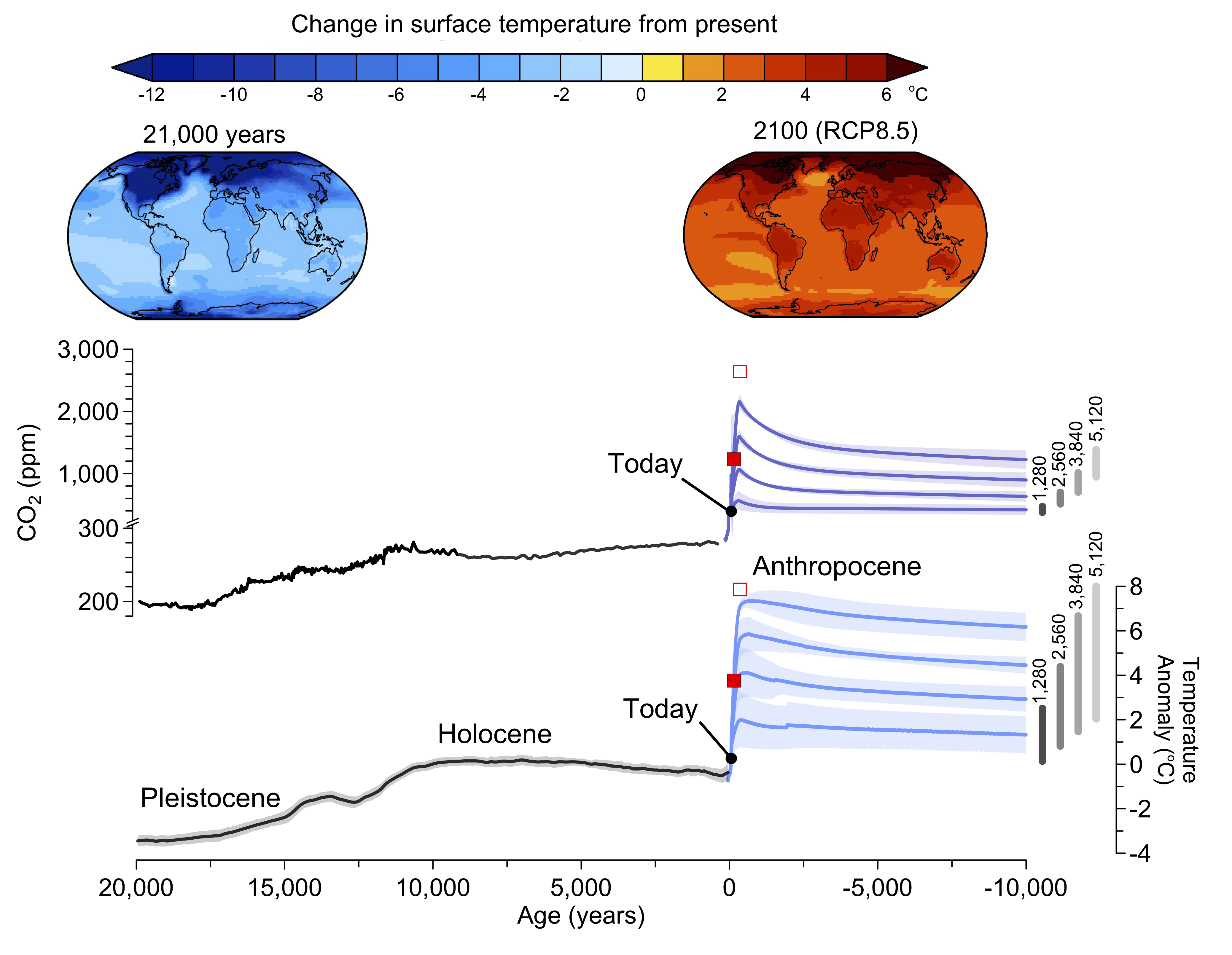 |
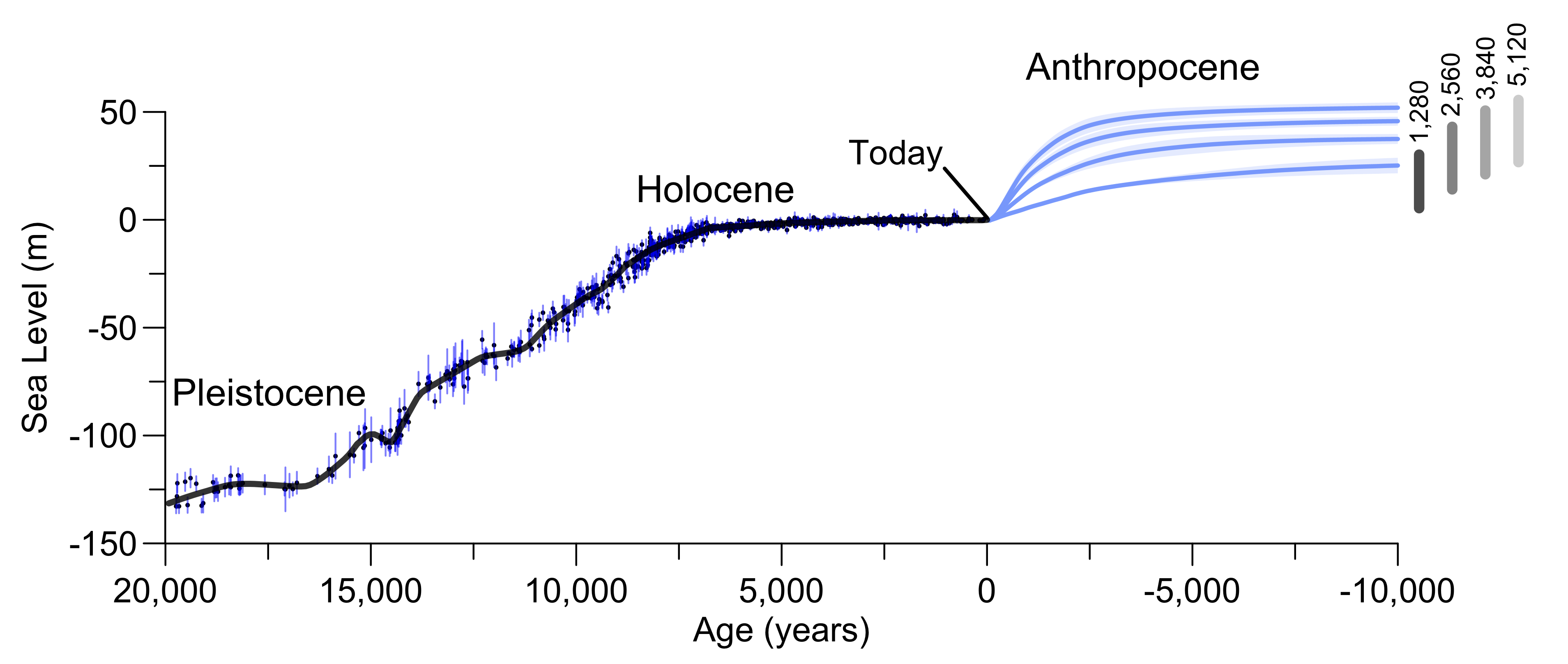 |
Sea level rise will have tremendous effects on people living in coastal regions. Clark et al. (2016) estimate that their low emission scenario (1,280 PgC) would submerge an area where currently 1.3 billion people live (19% of the global population) including 25 megacities such as Calcutta, New York, Tokyo, Shanghai, and Cairo. Due to the time lag associated with sea level rise we are already committed to future sea level rise from past emissions. By the year 2000, e.g. humans had emitted ~470 PgC and were committed to a sea level rise of about 2 m. Releasing another 470 PgC would commit us to another 9 m of long-term sea level rise.
Extremes
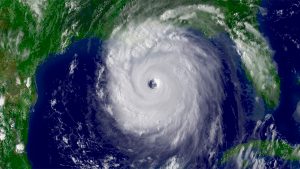
A warming climate implies a shift in the probability distribution such that hot extremes become more frequent and cold extremes become less frequent. This is what is currently observed and we can expect this trend to continue into the future. Due to the intensification of the hydrological cycle we can also expect more droughts and more floods. Changes in other extreme events are less well understood. Occurrences of total hurricanes and typhoons (tropical cyclones) are projected to decrease but the strongest hurricanes are projected to become more frequent (Knutson et al., 2010). This is a concern because those are the ones that inflict the most damage. Hurricane development depends on warm ocean water as an energy source. Latent heat release is also an important fuel for hurricanes and other storms. Thus warmer sea surface temperatures and more latent heat release due to more water vapor in the warmer air will strengthen hurricanes, consistent with observations of increases in the destructiveness of tropical storms in the past decades (Emanuel, 2005). Another important factor for hurricane development, particularly in its early stages, is wind shear. That is how fast winds increase with elevation. Storms require low shear to develop into a coherent vortex, which may become less likely in the future. The end result of changes in wind shear and changes in temperatures is that in a warmer climate the total number of hurricanes will decrease, but strong hurricanes will become more frequent and they will cause more rainfall.
Impacts on Humans
Climate change is already affecting people and more changes can be expected for the future. The decline of sea ice in the Arctic, for example, already affects native people there such as the Inuit. Their life depends on sea ice for hunting and travel and will be greatly affected by the expected future sea ice loss (Watt-Cloutier, 2015; watch her talk here). Sea ice also dampens waves and their effect on erosion of shorelines. Some villages are already threatened by increased erosion due to sea ice loss. On the other hand, a seasonally ice free Arctic will allow for ships to take a shortcut through the Northwest Passage and reduce travel time between the North Atlantic and North Pacific.
Similarly, some mining companies are already planning operations in Greenland in areas that were previously inaccessible due to ice cover. But this opportunity for resource extraction comes of course at the price of sea level rise, which will affect millions of people who live close to shore. Many people will also be affected by the loss of mountain glaciers and their summer water supply. Many current ski areas may no longer be viable in the future due to less snow cover and a shorter season, which will result in job losses there.
Climate change can also lead to conflict. The ongoing civil war in Syria, for example, has been partly caused by a drought, which has been attributed to anthropogenic climate change (Kelley et al., 2015). This attribution is in line with climate model projections that indicate dryer conditions around the Mediterranean in a warmer world (Figure 1.5.3) and paleoclimate data (Cook et al., 2016). Violent conflict about freshwater resources is not new in the history of this and other regions but the current conflict may be the first that is partly caused by anthropogenic climate change. The resulting migrants, many of which fled to central Europe, may be one of the first climate refugees. Conflict and climate refugees may be also be expected from people displaced by sea level rise, such as in Bangladesh or low laying islands. Sea level rise affects people not only through flooding but also by saltwater seeping into the freshwater lens that exists below the ground and provides islanders often with the only source of freshwater. This can also be a problem in other coastal regions.
Explore Impacts
Explore regional impacts of possible future climate change using this website.
References
Abatzoglou, J. T., and A. P. Williams (2016), Impact of anthropogenic climate change on wildfire across western US forests, Proceedings of the National Academy of Sciences, 113(42), 11770. doi: 10.1073/pnas.1607171113.
Bakker, P., A. Schmittner, J. T. M. Lenaerts, A. Abe-Ouchi, D. Bi, M. R. van den Broeke, W. L. Chan, A. Hu, R. L. Beadling, S. J. Marsland, S. H. Mernild, O. A. Saenko, D. Swingedouw, A. Sullivan, and J. Yin (2016), Fate of the Atlantic Meridional Overturning Circulation: Strong decline under continued warming and Greenland melting, Geophys Res Lett, 43(23), 12,252-212,260, doi: 10.1002/2016GL070457.
Clark, P. U., J. D. Shakun, S. A. Marcott, A. C. Mix, M. Eby, S. Kulp, A. Levermann, G. A. Milne, P. L. Pfister, B. D. Santer, D. P. Schrag, S. Solomon, T. F. Stocker, B. H. Strauss, A. J. Weaver, R. Winkelmann, D. Archer, E. Bard, A. Goldner, K. Lambeck, R. T. Pierrehumbert, and G.-K. Plattner (2016), Consequences of twenty-first-century policy for multi-millennial climate and sea-level change, Nature Clim. Change, 6, 360-369, doi: 10.1038/nclimate2923.
Collins, M., R. Knutti, J. Arblaster, J.-L. Dufresne, T. Fichefet, P. Friedlingstein, X. Gao, W.J. Gutowski, T. Johns, G. Krinner, M. Shongwe, C. Tebaldi, A.J. Weaver and M. Wehner, 2013: Long-term Climate Change: Projections, Commitments and Irreversibility. In: Climate Change 2013: The Physical Science Basis. Contribution of Working Group I to the Fifth Assessment Report of the Intergovernmental Panel on Climate Change [Stocker, T.F., D. Qin, G.-K. Plattner, M. Tignor, S.K. Allen, J. Boschung, A. Nauels, Y. Xia, V. Bex and P.M. Midgley (eds.)]. Cambridge University Press, Cambridge, United Kingdom and New York, NY, USA. pdf
Cook, B. I., K. J. Anchukaitis, R. Touchan, D. M. Meko, and E. R. Cook (2016), Spatiotemporal drought variability in the Mediterranean over the last 900 years, Journal of Geophysical Research: Atmospheres, 121(5), 2060-2074, doi: 10.1002/2015JD023929.
DeConto, R. M., and D. Pollard (2016), Contribution of Antarctica to past and future sea-level rise, Nature, 531(7596), 591-597, doi: 10.1038/nature17145.
Dutkiewicz, S., J. J. Morris, M. J. Follows, J. Scott, O. Levitan, S. T. Dyhrman, and I. Berman-Frank (2015), Impact of ocean acidification on the structure of future phytoplankton communities, Nature Climate Change, 5, 1002, doi: 10.1038/nclimate2722.
Emanuel, K. (2005), Increasing destructiveness of tropical cyclones over the past 30 years, Nature, 436(7051), 686-688, doi: 10.1038/nature03906.
GEA (2012) Global Energy Assessment – Toward a Sustainable Future, Cambridge University Press, Cambridge, UK and New York, NY, USA and the International Institute for Applied Systems Analysis, Laxenburg, Austria. link
Gonzalez, P., R. P. Neilson, J. M. Lenihan, and R. J. Drapek (2010), Global patterns in the vulnerability of ecosystems to vegetation shifts due to climate change, Global Ecology and Biogeography, 19(6), 755-768, doi: 10.1111/j.1466-8238.2010.00558.x.
IPCC (2014) Climate Change 2014: Impacts, Adaptation, and Vulnerability. Part B: Regional Aspects. Contribution of Working Group II to the Fifth Assessment Report of the Intergovernmental Panel on Climate Change [Barros, V.R., C.B. Field, D.J. Dokken, M.D. Mastrandrea, K.J. Mach, T.E. Bilir, M. Chatterjee, K.L. Ebi, Y.O. Estrada, R.C. Genova, B. Girma, E.S. Kissel, A.N. Levy, S. MacCracken, P.R. Mastrandrea, and L.L. White (eds.)]. Cambridge University Press, Cambridge, United Kingdom and New York, NY, USA, pp. 688. link
Kelley, C. P., S. Mohtadi, M. A. Cane, R. Seager, and Y. Kushnir (2015), Climate change in the Fertile Crescent and implications of the recent Syrian drought, Proceedings of the National Academy of Sciences, 112(11), 3241. link
Knutson, T. R., J. L. McBride, J. Chan, K. Emanuel, G. Holland, C. Landsea, I. Held, J. P. Kossin, A. K. Srivastava, and M. Sugi (2010), Tropical cyclones and climate change, Nat Geosci, 3, 157, doi: 10.1038/ngeo779.
Larsen, J.N., O.A. Anisimov, A. Constable, A.B. Hollowed, N. Maynard, P. Prestrud, T.D. Prowse, and J.M.R. Stone, 2014: Polar regions. In: Climate Change 2014: Impacts, Adaptation, and Vulnerability. Part B: Regional Aspects. Contribution of Working Group II to the Fifth Assessment Report of the Intergovernmental Panel on Climate Change [Barros, V.R., C.B. Field, D.J. Dokken, M.D. Mastrandrea, K.J. Mach, T.E. Bilir, M. Chatterjee, K.L. Ebi, Y.O. Estrada, R.C. Genova, B. Girma, E.S. Kissel, A.N. Levy, S. MacCracken, P.R. Mastrandrea, and L.L. White (eds.)]. Cambridge University Press, Cambridge, United Kingdom and New York, NY, USA, pp. 1567-1612. link
Manabe, S., and R. F. Strickler (1964), Thermal Equilibrium of the Atmosphere with a Convective Adjustment, J. Atmos. Sci., 21, 361-385. pdf
Marzeion, B., A. H. Jarosch, and M. Hofer (2012), Past and future sea-level change from the surface mass balance of glaciers, The Cryosphere, 6(6), 1295-1322, doi: 10.5194/tc-6-1295-2012.
Matthews, H. D., N. P. Gillett, P. A. Stott, and K. Zickfeld (2009), The proportionality of global warming to cumulative carbon emissions, Nature, 459(7248), 829-U823, doi: 10.1038/Nature08047.
Moritz, M. A., M.-A. Parisien, E. Batllori, M. A. Krawchuk, J. Van Dorn, D. J. Ganz, and K. Hayhoe (2012), Climate change and disruptions to global fire activity, Ecosphere, 3(6), 1-22, doi: 10.1890/ES11-00345.1.
Mote, P. W., S. Li, D. P. Lettenmaier, M. Xiao, and R. Engel (2018), Dramatic declines in snowpack in the western US, npj Climate and Atmospheric Science, 1(1), 2, doi: 10.1038/s41612-018-0012-1.
Robinson, A., R. Calov, and A. Ganopolski (2012), Multistability and critical thresholds of the Greenland ice sheet, Nature Climate Change, 2, 429, doi: 10.1038/nclimate1449.
Sheehan, T., D. Bachelet, and K. Ferschweiler (2015), Projected major fire and vegetation changes in the Pacific Northwest of the conterminous United States under selected CMIP5 climate futures, Ecological Modelling, 317, 16-29, doi: 10.1016/j.ecolmodel.2015.08.023.
Stocker, T.F., D. Qin, G.-K. Plattner, L.V. Alexander, S.K. Allen, N.L. Bindoff, F.-M. Bréon, J.A. Church, U. Cubasch, S. Emori, P. Forster, P. Friedlingstein, N. Gillett, J.M. Gregory, D.L. Hartmann, E. Jansen, B. Kirtman, R. Knutti, K. Krishna Kumar, P. Lemke, J. Marotzke, V. Masson-Delmotte, G.A. Meehl, I.I. Mokhov, S. Piao, V. Ramaswamy, D. Randall, M. Rhein, M. Rojas, C. Sabine, D. Shindell, L.D. Talley, D.G. Vaughan and S.-P. Xie, 2013: Technical Summary. In: Climate Change 2013: The Physical Science Basis. Contribution of Working Group I to the Fifth Assessment Report of the Intergovernmental Panel on Climate Change [Stocker, T.F., D. Qin, G.-K. Plattner, M. Tignor, S.K. Allen, J. Boschung, A. Nauels, Y. Xia, V. Bex and P.M. Midgley (eds.)]. Cambridge University Press, Cambridge, United Kingdom and New York, NY, USA. link
Watt-Cloutier, S. (2015) The Right to Be Cold, Penguin Canada Books, Ontario, Toronto. link youtube
Weertman, J. (1961) Stability of Ice-Age Ice Sheets, J. Geophys. Res. 66 (11), 3783-3792, doi:
- This quote has been attributed to various people including the Danish physicist Niels Bohr and American writer Mark Twain. ↵

